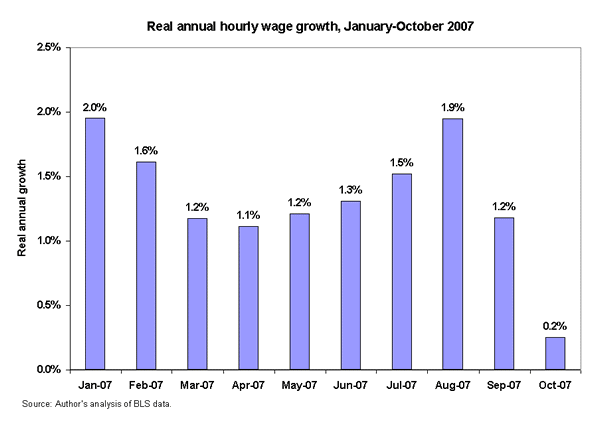See Snapshots archive.
Snapshot for November 28, 2007.
When steady wage growth meets faster inflation
With energy costs rising quickly, up 1.4% last month and 14.5% over the past year, inflation accelerated in October, up 3.5% compared to last October. If higher overall inflation like this persists, what impact is it likely to have on wage growth and consumer spending?
The hourly wages of most workers—blue-collar workers in manufacturing and non-managers in services—have been growing at around 4% per year in recent months, and this has been fast enough wage growth to consistently beat inflation and boost these workers’ buying power.
Last month, however, faster price growth caught up to hourly wages, and real hourly wage growth was essentially flat-up 0.2%, when adjusted by the Consumer Price Index for All Urban Consumers (see Chart). Since average weekly hours worked have also held steady or fallen slightly, real weekly earnings were also flat in October (no change on a yearly basis).

Though job market reports have been mixed, the consensus among economists is that unemployment, which has begun to increase, is likely to continue rising in coming months. It is certainly unlikely that wage growth will accelerate in this climate, and more likely that both hourly wage growth and average weekly hours will slow. If so, the combination of faster inflation and steady or slowing wage growth will reduce the buying power of many workers.
This, in turn, has the potential to slow consumer spending, a key factor that has been driving the economy forward in recent quarters. In other words, last month’s lack of real wage growth may be a harbinger of where this important indicator is heading in future months.
